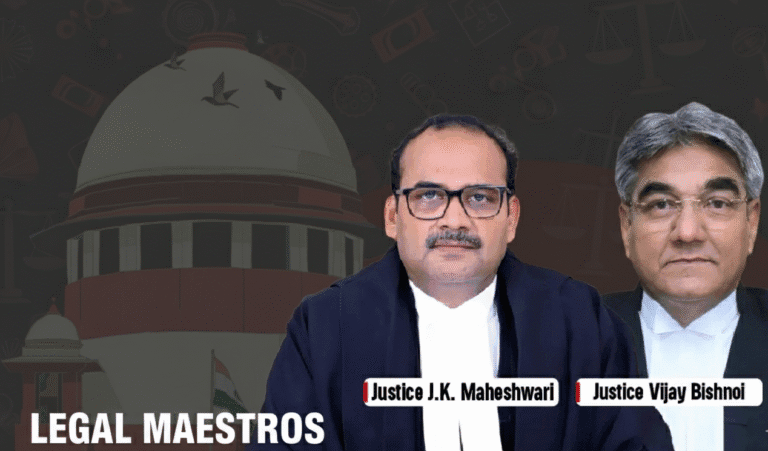
Recently the supreme court of India made a landmark ruling on the interpretation and the existence of arbitration agreements especially on the language of the wordings of contracts. This judgment in a case involving BGM AND M-RPL-JMCT (JV) vs. Eastern Coalfields Limited, sheds much clarification on when a clause would be a binding arbitration agreement as per section 7 of the Arbitration and Conciliation Act, 1996 (also called the 1996 Act).
History of the Conflict
The instant case was based on a contract between BGM AND M-RPL-JMCT (JV) (the appellant) and Eastern Coalfields Limited (the respondent), in relation to transportation and handling of goods. There were conflicts in the contract period. The appellant tried to settle these controversies by an act of arbitration basing it on Clause 13 of the General Terms and Conditions annexed to the e-tender notice which they argued to be an arbitration agreement.
Closely related to this issue was the multi stage dispute settlement process described in clause 13. In the beginning, an attempt would be made to resolve conflicts in the company itself. In case the differences continued, the dispute would be realised to an Area CGM, GM and a committee composed by the owner. In cases that involved conflicts between the Central Public Sector Enterprises (CPSEs) or between CPSEs and the Government Departments, AMRCD was to suggest a resolution. In other parties however, excluding the Government Agencies, the clause read, “the dispute may be redressed in form of ARBITRATION AND CONCILIATION ACT, 1996 as amended by the AMENDMENT ACT OF 2015).
For any queries or to publish an article or post or advertisement on our platform, do call at +91 6377460764 or email us at contact@legalmaestros.com.
Based on the undersigned part of Clause 13, the appellant sought by an application under Section 11(6) of the 1996 Act to have an Arbitrator appointed. Eastern Coalfields Limited wrote in appeal on the ground that Clause 13 did not have the required elements of an arbitration issue. The High Court at Calcutta rejected the application made by the appellant highlighting the usage of the term may in Clause 13 and referring to judgments made in the Supreme Court in the past.
Very important Matters before the Supreme Court
Three major matters of consideration were pointed out by the Supreme Court:
- Whether or not the jurisdiction of whether or not an arbitration agreement exists should be left up to the arbitral tribunal.
- Whether clause 13 of the contract would be an agreement to arbitrate as envisaged by section 7 of the 1996 act.
- Did Clause 32 of the Instructions to Bidders imply that there was no arbitrational agreement.
The Role of the Referral Court in Checking the Arbitration Agreements
On the former, the Supreme Court made reference to a seven-Judge decision of a Constitution Bench, and on the latter, it said that it is necessary to refer to the Constitution Bench of the Supreme Court.
For any queries or to publish an article or post or advertisement on our platform, do call at +91 6377460764 or email us at contact@legalmaestros.com.
Enjoyment rather than Lack of Dominant Control over Arbitration Agreements under Arbitration, 1996 & Stamp Act, 1899, in re. This case law defined that the powers of the Referral Court under Section 11 of 1996 Act extend only to the investigation of the
superiority of an arbitration agreement. This investigation suggests the idea of a
prima facie decision, which is the manner by which the court merely needs to be content that on the surface that such an agreement exists. The court will not hold a mini-trial or a laborious investigations determined on the validity or substantive existence of the agreement but that is the domain of Arbitral Tribunal to determine under Section 16.
For any queries or to publish an article or post or advertisement on our platform, do call at +91 6377460764 or email us at contact@legalmaestros.com.
The onus of the proof of the
the prima facie existence of the arbitration agreement is placed on the shoulders of the party who wants to have recourse to it. When the agreement to arbitrate is stipulated in an undisputed document then it suffices them to interpret it through a plain meaning in order to get the meaning of arbitration.
existence prima facie. This skeletal process is to clear away the rubbish of lightweight arbitration claims. Consequently, the Supreme Court upheld the view that the Referral Court is not at liberty to just forward the same to the arbitral tribunal without a
For any queries or to publish an article or post or advertisement on our platform, do call at +91 6377460764 or email us at contact@legalmaestros.com.
prima facie fulfilment of existence of the agreement.
The interpretation of May in Arbitration Clauses
The meat of the disagreement was with regard to how Clause 13 was to be interpreted and how to use the word may. Under Section 7 of the 1996 Act an arbitration agreement is an agreement between parties to have a dispute referred to arbitration. Based on earlier rulings such as the Supreme Court utilizes past judgments as its basis in making decisions touching on the provisions of various laws.
Jagdish Chander vs. Ramesh Chander and Others and Mahanadi Coalfields Ltd. vs. IVRCL AMR Joint Ventures again observed that in order to prove to be an arbitration agreement, a clause should show clearly that a decision had been made and a commitment to resort to arbitration is to be fulfilled, it should not just keep the possibility of resorting in College enough.
For any queries or to publish an article or post or advertisement on our platform, do call at +91 6377460764 or email us at contact@legalmaestros.com.
The Court noted that when a clause provides that phrases such as, parties may, should they wish, refer their disputes to arbitration or in case of any dispute they may agree to refer such dispute to arbitration or in case of any dispute between the parties they should consider settlement by arbitration, such a clause does not amounts to an arbitration agreement. These words show either a wish or hope, or provisional settlement, which needs the additional agreement, or new consent, to mention arbitration.
Clause 13 of the current case included the statement that the redressal of the dispute must be provided by the help of ARBITRATION AND CONCILIATION ACT, 1996. The Supreme Court was of the opinion that when the phrase is employed as may be sought that they would not be obligated to employ arbitration. It means that there is lack of continuing contractual obligation of seeking settlement either by court or through arbitration compulsorily. It is not rather an enabling clause where parties decide to settle disputes through arbitration
when they will accept to do so. As such, the wordings of Clause 13 did not reflect on a commitment agreement where either party can arbitrarily request arbitration. The ruling of the High Court which held that Clause 13 was not an arbitration agreement was affirmed.
For any queries or to publish an article or post or advertisement on our platform, do call at +91 6377460764 or email us at contact@legalmaestros.com.
The jurisdiction of the jurisdiction Clause
The third was related to Clause 32 of the Instructions to bidder which provided that the disputes will be taken by District Court jurisdiction. Addressing the third issue, the Court considered it to be irrelevant considering the fact that Clause 13 was not an arbitration agreement. Nevertheless, it observed in passing that such a jurisdiction clause as Clause 32 has the main juridical seat effect in the case of an arbitration agreement, but it alone does not exclude the possibility of the dispute resolution based on an arbitration agreement. As there was no agreement on arbitral, this provision was made ineffective.
The judgment of the Supreme Court is more in strengthening the fact that in order to have a valid arbitration agreement, parties have to express a clear and unambiguous mentality that they will be bound to be subject to arbitration. There must be more than the possibility or the right to arbitrate the disputes, which words often suggest as in permissive such as or may. The case is of essential guidance to parties who draw up contracts as it is important to ensure that they adopt clear words to make themselves understood when it comes to dispute resolution.




![Research Assistantship @ Sahibnoor Singh Sindhu, [Remote; Stipend of Rs. 7.5k; Dec 2025 & Jan 2026]: Apply by Nov 14, 2025!](https://legalmaestros.com/wp-content/uploads/2025/11/Gemini_Generated_Image_s0k4u6s0k4u6s0k4-768x707.png)
![Karanjawala & Co Hiring Freshers for Legal Counsel [Immediate Joining; Full Time Position in Delhi]: Apply Now!](https://legalmaestros.com/wp-content/uploads/2025/11/Gemini_Generated_Image_52f8mg52f8mg52f8-768x711.png)
![Part-Time Legal Associate / Legal Intern @ Juris at Work [Remote]: Apply Now!](https://legalmaestros.com/wp-content/uploads/2025/11/ChatGPT-Image-Nov-12-2025-08_08_41-PM-768x768.png)
![JOB POST: Legal Content Manager at Lawctopus [3-7 Years PQE; Salary Upto Rs. 70k; Remote]: Rolling Applications!](https://legalmaestros.com/wp-content/uploads/2025/11/ChatGPT-Image-Nov-12-2025-08_01_56-PM-768x768.png)
1 thought on “Supreme Court Bench Led by Justices Narasimha and Misra Clarifies Arbitration Law: Says ‘May’ in Clause Does Not Mean Binding Agreement”